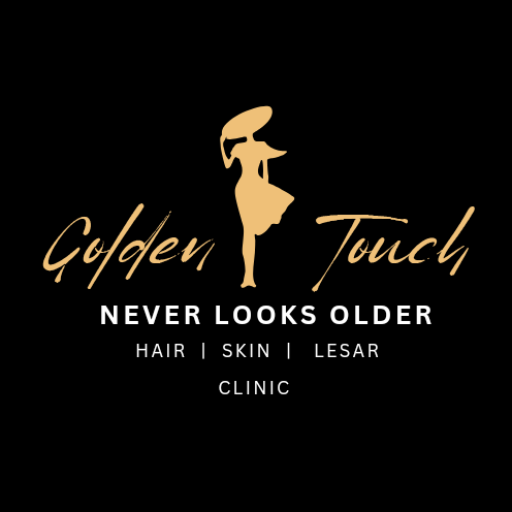Skin Treatment Clinic Golden Touch Clinic Kottwa Colombo Sri Lank
skin clinic is a healthcare facility or medical office that specializes in the diagnosis, treatment, and prevention of skin conditions. These clinics often provide a range of services, including dermatology consultations, medical treatments, cosmetic procedures, and skin care advice.
Chemical Peel
deep chemical peel
deep chemical peel is a cosmetic treatment used to improve the appearance of the skin by removing damaged outer layers. It is the most intensive form of chemical peeling, targeting deeper layers of the skin than lighter peels, such as superficial or medium-depth peels. Here’s an overview of what it involves:How It Works:
- Chemical Solution: A strong chemical solution is applied to the skin, typically containing trichloroacetic acid (TCA) or phenol. These chemicals exfoliate the skin and encourage the growth of new, smoother skin.
- Target Areas: It is commonly used to treat deep wrinkles, severe sun damage, acne scars, age spots, and uneven pigmentation, particularly on the face. The solution penetrates the dermis (the deeper skin layer) to promote significant skin renewal.
- Healing Process: The procedure causes the skin to blister and peel off over several days, revealing fresher, smoother skin underneath. This process can take up to two weeks or more for full recovery.
Benefits:
Improved Skin Texture: It helps to even out skin tone, reduce the appearance of scarring, and rejuvenate dull or damaged skin.
Significant Skin Improvement: A deep peel can result in a more youthful appearance, with a reduction in wrinkles, fine lines, and sun spots.
Long-lasting Results: Unlike superficial peels, the effects of a deep chemical peel can last for many years with proper skin care.
PDO Thread Lifting
It is non-surgical cosmetic procedure designed to lift and tighten the skin using PDO (Polydioxanone) threads. These are fine, absorbable threads that are inserted into the skin through small needles, creating a lifting effect as they are placed in strategic areas of the face. The PDO threads stimulate collagen production, which improves skin texture and firmness over time. This procedure is typically used to target areas such as the cheeks, jawline, neck, and under the eyes, providing a subtle lift and smoother skin.
HydraFacial
Is a non-invasive facial treatment designed to improve the appearance of the skin by cleansing, exfoliating, extracting impurities, and hydrating it. It uses a specialized device that combines various technologies for a multi-step treatment process. The procedure typically involves the following steps:
- Cleansing and Exfoliation: The skin is thoroughly cleaned to remove dirt, oil, and dead skin cells, helping to reveal a fresh layer of skin.
- Acid Peel: A mild chemical peel is applied to help loosen dirt and debris from the pores, allowing for deeper cleansing without the irritation of traditional chemical peels.
- Extraction: The HydraFacial device uses a vacuum-like suction to extract blackheads and impurities from the pores.
- Hydration: Special serums are infused into the skin to hydrate and nourish it, leaving the skin with a refreshed and dewy appearance.
laser skin Treatments Clinic
laser skin hair removal
Laser hair removal is a popular and effective method for removing unwanted body or facial hair using concentrated light (laser) technology. The laser targets hair follicles, damaging them to inhibit or delay future hair growth.
Here’s how it generally works:
Pain and Side Effects: Laser hair removal is usually well-tolerated, though some people feel a slight discomfort, similar to the snap of a rubber band. Possible side effects include redness or swelling around the treated area.
Laser Technology: A laser emits light that is absorbed by the pigment (melanin) in the hair. The light is converted into heat, which damages the hair follicles.
Targeting Hair Follicles: The heat disrupts the ability of the hair follicles to produce new hair, leading to permanent hair reduction over time.
Multiple Sessions: Laser hair removal often requires several sessions because hair grows in different cycles. Some hairs might not be in the active growth phase during the first treatment, so multiple sessions are needed to target all the hair.
Effectiveness: It works best on people with light skin and dark hair since the laser can more easily target the contrast between the two. However, modern lasers have improved to work on a wider range of skin tones.
Procedure Areas: It can be done on most areas of the body, including the face, legs, underarms, and bikini line.
Laser Tattoo Removal Works
How Laser Tattoo Removal Works
- Laser Light: A highly concentrated beam of light is targeted at the tattooed skin. Different wavelengths of light are used depending on the ink colors in the tattoo. For example, darker colors like black and blue absorb the light more effectively, while lighter colors like yellow or green might require specialized wavelengths.
- Ink Breakdown: The laser’s energy is absorbed by the tattoo ink, breaking the ink particles into smaller pieces. These particles are then flushed out by the body’s lymphatic system over time.
- Multiple Sessions: Tattoo removal typically requires multiple sessions, spaced 6-8 weeks apart. The number of sessions depends on factors like the size of the tattoo, the ink colors, and the depth of the ink in the skin.
- Aftercare: After each session, it’s important to follow aftercare instructions to avoid infection, scarring, or complications. This often includes keeping the treated area clean, applying ointments, and avoiding direct sun exposure.
Types of Lasers Used
- Q-Switched Lasers: These are the most common lasers for tattoo removal, as they deliver high-energy light pulses that are effective in breaking down tattoo ink.
- Picosecond Lasers: These lasers emit ultra-short pulses that break down the ink particles into even smaller pieces, potentially reducing the number of sessions needed for removal.
